 I was so inspired by yesterday’s Queer Science Fiction and Fantasy (QSF&F) Book Club meeting that I published a review of “The Windup Girl”! I’d love to read your comments about the review.
I was so inspired by yesterday’s Queer Science Fiction and Fantasy (QSF&F) Book Club meeting that I published a review of “The Windup Girl”! I’d love to read your comments about the review.
Category Archives: torture
Ife Museum and Oba’s Palace in Ile-Ife, Nigeria
The ride from Benin City to Ile-Ife was not as difficult as my prior overland travel in Nigeria. Evangelist Christians are omnipresent in most of the southern part of the country with Muslims predominating in the north and traditional animist and other religions hanging on to survival a bit behind the scenes.


The Ife Museum in Ile-Ife had the following exhibits–
Musical instruments:
Rattles (calabash)
Metal gong
Gan-gan (talking drum with stick)
Saworo (metal musical instrument)
Metal ornaments:
Bracelets, ring, from 10-11th century CE, beautiful designs, woman-figures
Ibeji twin figures
Yoruba consider twins a source of blessing, bring good fortune to parents
Barren women can approach Ogun during Olojo festival to gain fertility, possibly even twins
Ibom masquerade among Efik people in Calabar – snake-like cords and raffia skirt
King and Queen, probably Ooni and wife, his left leg around her right leg, many beads in their crowns, beads on hands, chest, feet, rings on second toes, excavated by Frank Willet at Ita-Yemoo, dated 11-12th century CE, bronze, his face brown, her face green
Emir of Kano’s fara (jester)
Royal stool, terracotta, largest known in Africa from Iwinrin Grove, Ile-Ife, human figure standing on four-legged rectangular stool, behind him a pole of some king with a protrusion over the stool and between its feet
Olokun head, god(dess?) of the sea, giver of children, healer of abdominal disease, treat water with herbs for drinking
Ceremonial Insignia
Heavy next ring with spiral decorations at bottom of think neck loop
Brass mace heads, with aged gagged men with hole for mounting on wood shaft
Brace scepters, one with gagged men, from Ita-Yemoo, Ife
Glass beads made at Olokun Grove, melted in crucibles, various colors, Segi blue beads the most valued by Yoruba, thin and long, light blue
Animal Life
Rams, goats, kids represent offerings to gods and ancestors
Dogs also perhaps, but also as human companion
Snakes and chameleons are sacred
Monkeys in legends
Owl unique in west African art
Yoruba oba may own 40-50 crowns, most made of colored beads, collars over necklaces of fold, fly-whisk of horse hair
Offering pots at shrine or sacred grove, or burial place
Ade Owo Eyo – crown of cowrie cells, worn by wealthy individuals
Hunter mask – skin-covered wooden mask worn as camouflage
Sango stool and staffs
Orere Ifa (Ifa priest staff)
Wooden tray for divination with palm nuts
Divination tray (wooden) – with Opele divination instrument, dried fruit of Schnebera Golugensis – has convex and concave surfaces
Araba – Ifa chief priest – bust adorned with cowries selected from male Ifa worshipers without facial marks, presides over Ifa meetings and annual Ifa festival proceedings
Ase juju – usually prepared inside horn of ram or goat, invoked for cursing or healing, protruding pin inside the Ase – when removed and touches tongue, becomes a potent force of command, cursing, or healing
Ojboni metal crown – conical with facial representation, secret cult originating in Yorubaland and spreading elsewhere
Beaded bag – used by Yoruba ritual specialists, esp. Ife diviners and Sango priests
Archaeology in Ife:
Lander, 1830
Elgee, 1908
Ennett, 1910
Frobenius excavated Olokun Grove
Wunmonjie finds in 1938
Osangangan Obamakin Grove, 1943
Abiri excavation by Bernard Fagg, 1949
Ogun Ladin, Olokuri Walode, Ogbon Oya, 1953
Yemoo, Frank Willet, until 1983
Obamari Grove and Oduduwa College, Oliver Myers, 1964 and 1966
Stone carvings from Ore (One?) Grove
Potsherds Pavement – Luwoo – during reign of only female ooni of Ife-Luwoo, c. 1100 CE
Opa Oranmiyan (Oranmiyan staff)
Legend of sword that turns into obelisk
Oranminyan, youngest son of Odududwa, c. 1200-1300 CE
Husband of Moremi, heroine of Ife
Benin dynasty founded by Oranmiyan, married one of their daughters
Gave birth to Eulaka, first Oba of Benin
Then went to Oyo where his son Ajaka became Alaafin of Oyo
Oranmiyan then drove Ooni Aleyemore (son of Obalufon Ogbogboirin) off the throne of Ife (he had taken throne after Oduduwa’s death)
Ile-Oduduwa – location where Oduduwa believe to have resided
Oke Mogun (Ojobo) shrine, sacrifice offered to Ogun, god of iron, during Olojo festival, Ooni of Ife must visit twice to offer prayers for subjects during Olojo festival, only day when ooni dons the Are (or Ave?) crown
Igbo-Ukwu, 9th century CE, found burial chamber and art in 1938
Conical heads, used offerings at shrines or memorials to ancestors as tradition possibly elder than naturalistic heads
Crucibles found at Itajero used for making beads
Olokun Grove only place with both iron smelting and glass bead technology
Lokoloko stick – used to control crowd during Olojo festival
Osangangan Obamakin Grove – terracotta figure with elephantiasis of scrotum (Ile-Ife)
Ajilekege – granite head from Esure Ekiti, Ife
Stone vessel excavated from Orangangan Obamakin Grove – bubble at top suggesting palm wine fermentation, palm wine essential ritual item for Ogun during Olojo festival
Edan Ogboni – brass insignia worn around neck, male and female figures joined by chain, given to every member of Ogboni/Osugbo society among Yoruba
Ceremonial insignia of Yoruba cults:
Edau figure
Oluwo staff
Yeye
Plier ceremonial tool
Small scythe-like ceremonial tool
Gun powder flask with double face
Ogboni bell for heralding commencement of meeting
Oluwo figure
Bell probably used by Ifa cult, tall conical brass, nine inches long
I almost didn’t get to see the Oba’s palace in Ile-Ife, but luckily some other tourists wanted to see it at the same time, so they gave us a little tour for a little price. It was there I learned about Moremi, “the heroine from premordial times” who, when captured as a slave by the Ugbo people eventually married the Ugbo ruler and became the queen to discover the secret of the Ugbo’s power so that she could bring it back to her people, the Yoruba, and defeat the Ugbo.

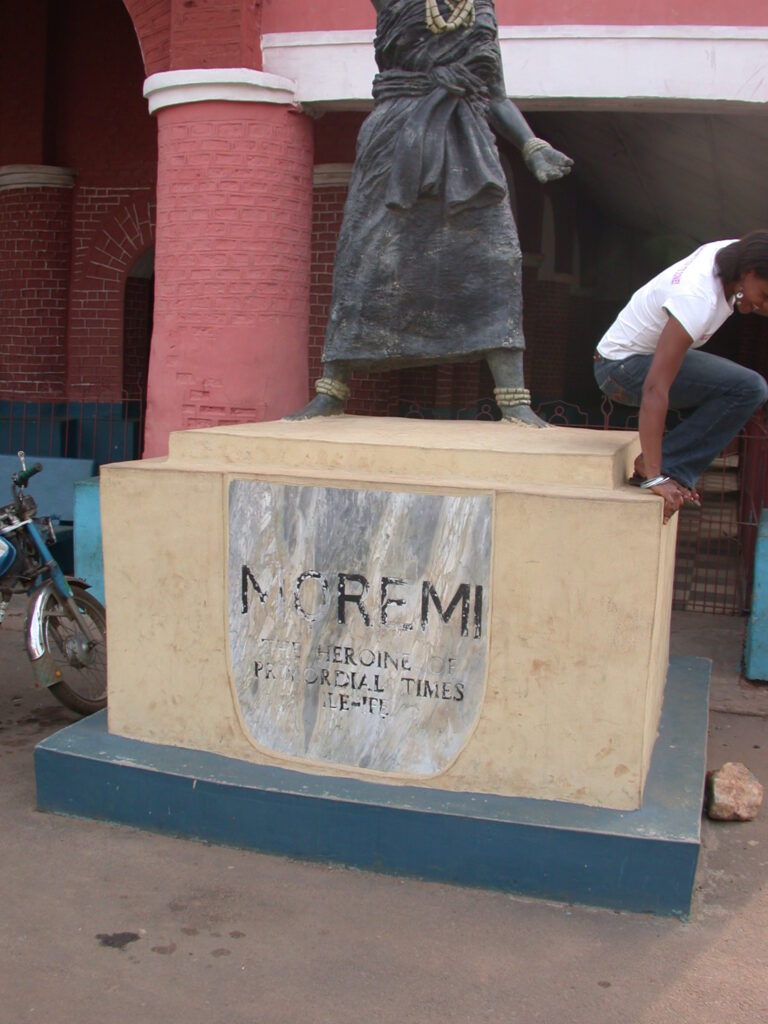
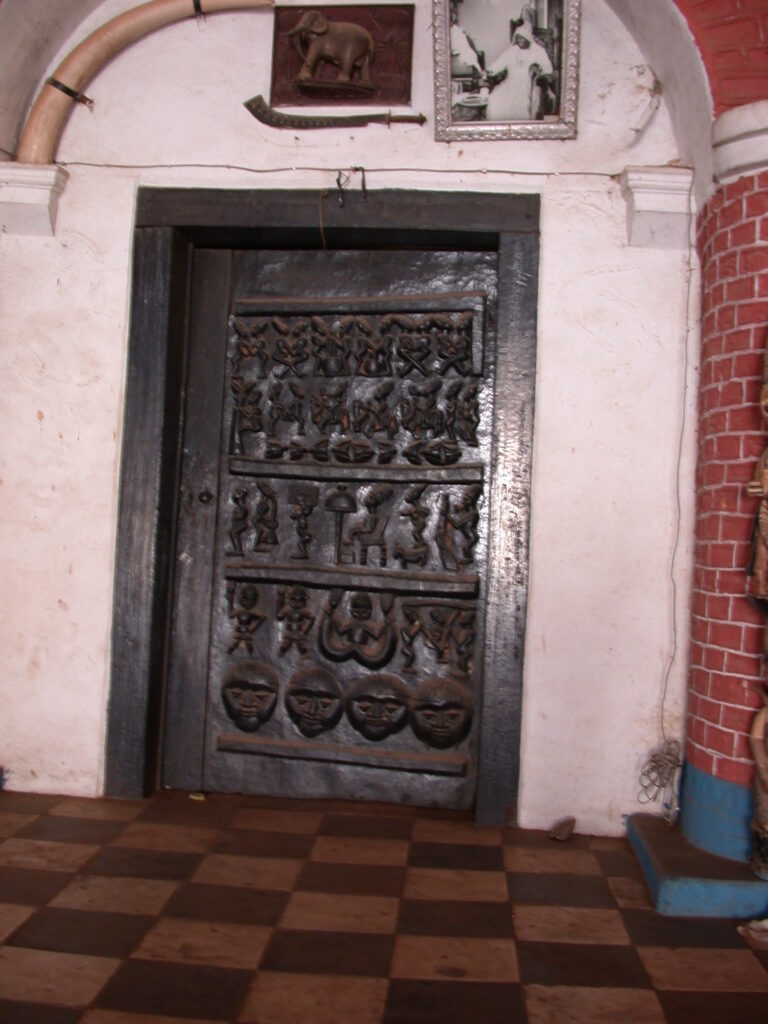


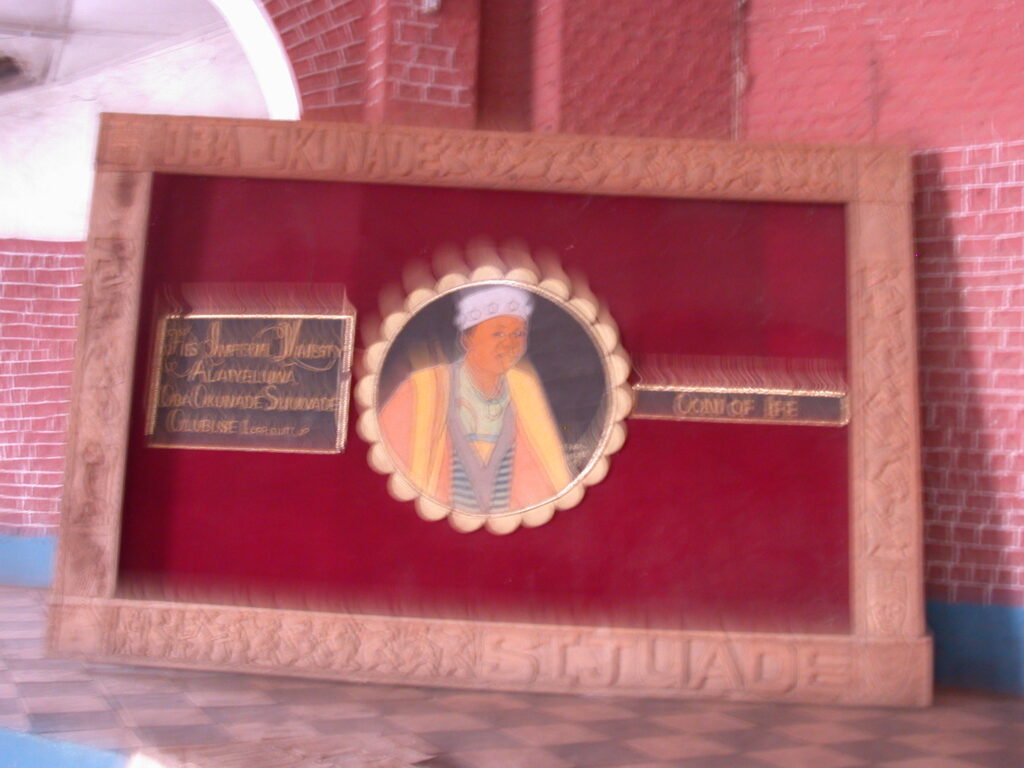


Abomey to Cotonou to Porto Novo
Written on December 16, 2007, at the museums, and on December 25, 2007, Fajol Castle Hotel, Abeokuta, Nigeria

I couldn’t pick up my Togo visa in Cotonou because it turned out it was the weekend, so I headed to the station for Porto Novo.
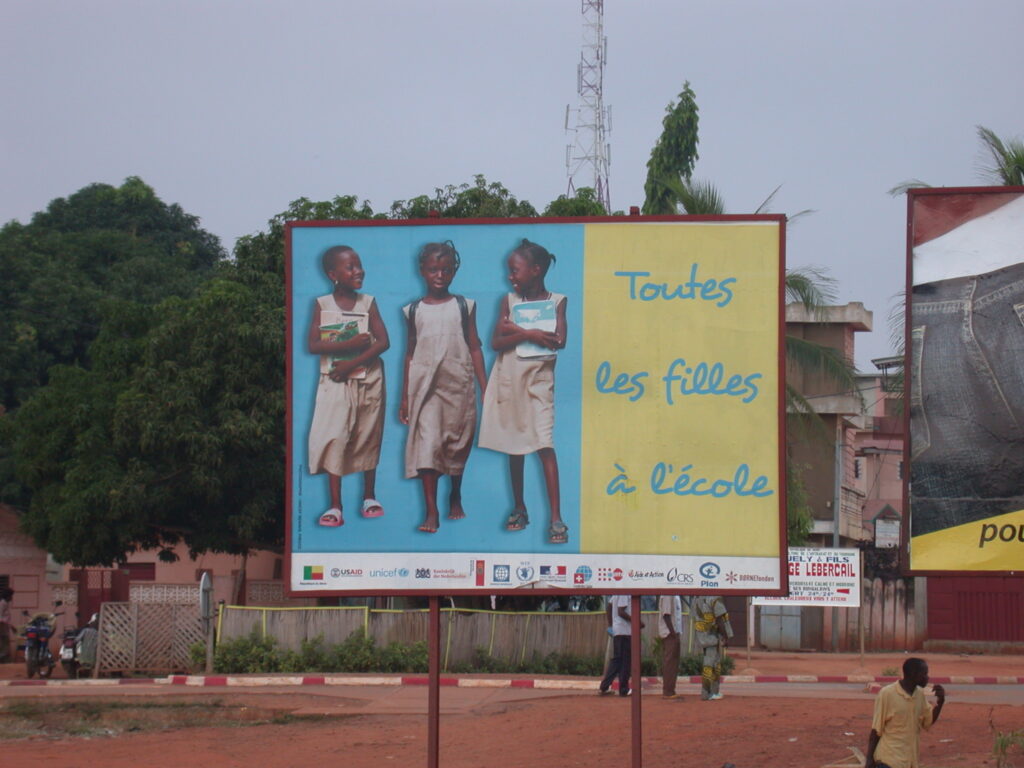
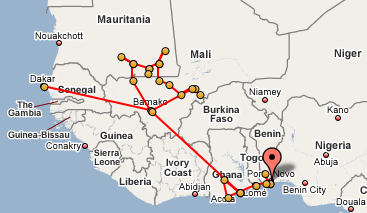
In Porto Novo, I stayed at the amazing Centre Songhaï, which was not only a hotel but also an entrepreneurial venture designed to inspire and empower African youth. I sampled their jams and a variety of juices produced there, including baobab, pineapple, and a bit-too-strong ginger. They had signs up around the premises explaining a bit of the philosophy of the place, including an integrated approach to design and industry.





My expedition walking to town included a visit to the Musée Ethnographique and the Musée Honmé.



The Musée Ethnographique has exhibits related to birth, life, and death in cultures throughout Benin, including Gelede masks of the Yoruba as well as artifacts related to Betamaribe aka Samba (NW) and Patombou (NE) peoples. Léonard gave me a tour of the museum. There was also a Yoruba “statue” of a man with false breasts and a mask worn on top of his head carrying twins, one in each arm. Yoruba revere women as having the power of life and twins as a gift of the gods.
I avoided a trip inside the Musée da Silva, despite the well-done bas reliefs about slavery on the museum’s exterior, and despite the admonitions of a fellow hanging out on the street who worked there.
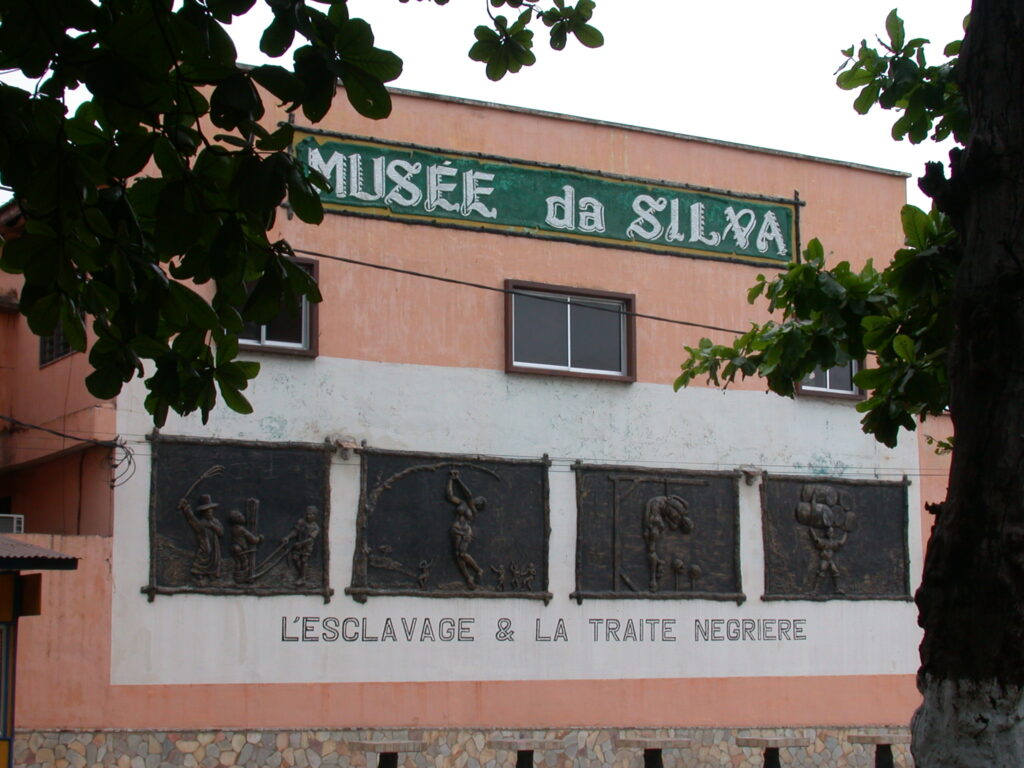






I came across this temple-like edifice labeled Zangbeto Kphkli-Yaou with a fascinating altar on the premises.


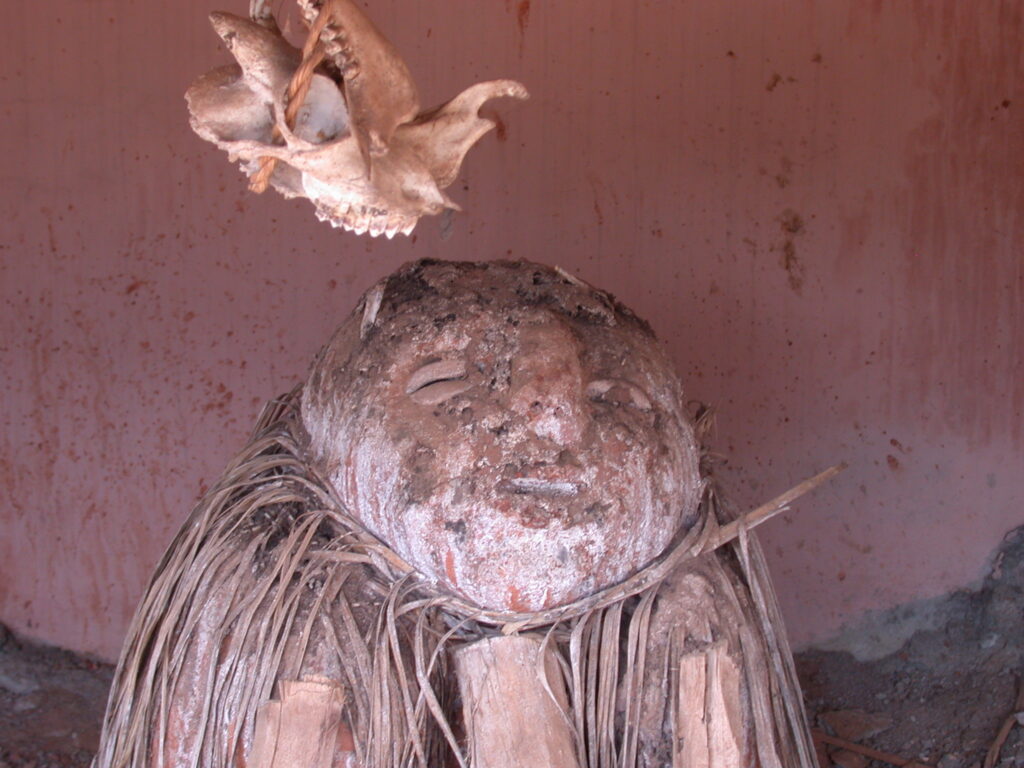
The Musée Honmé was the palace of the kings of Porto Novo from the late 17th to 19th centuries.




Currently under renovation with a guide who explained very well the history of the place. There were courts of the king, the queen mother, a gri-gri room for the king, the “chambre noire” for committing royal suicide, a kitchen with a divinity used to check the food for poison by a change in color, a tree of justice and some prison cells, the king’s toilet, the queen’s bathing area (although they lived elsewhere and came to the palace for 21-day stays during which they danced for the king in hope of being chosen to spend the night with him). Cannon were purchased for 15 male slaves or 21 female slaves from the French and perhaps also earlier from the Portuguese. A waiting room for visitors used so the king could check with a divinity about their intentions. Also had a mound representing Legba, a protective divinity, and representations of other divinities, as well as metal houses for ancestors. The king didn’t die — he went on a voyage. He didn’t bathe because he was always proper — he just refreshed his body. He didn’t eat — he adored the food.


Returning to the hotel, I relaxed, ate dinner, and visited the Internet cafe. I also met the Director of the Songhaï Center who helped me clear up a billing problem for telephone calls that wouldn’t work properly to the U.S.
Protected: Diatribe Series #1: Why Does “Terrorism” Happen?
Las Madres de la Plaza de Mayo
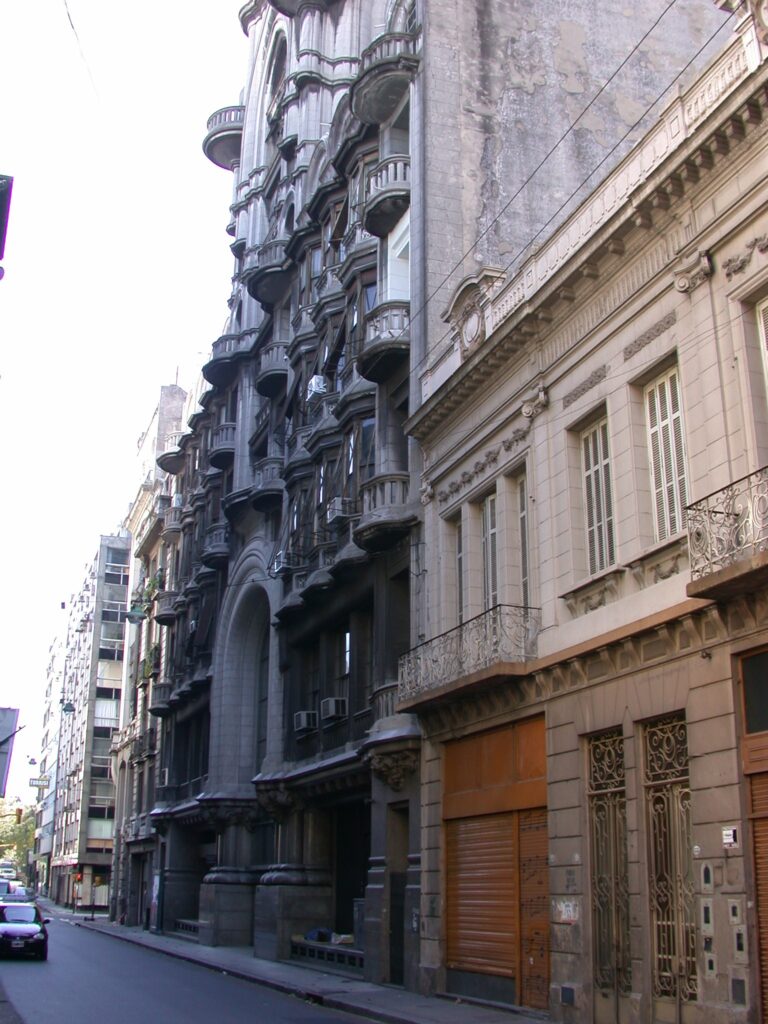
Jim e and I got up reasonably early and after a quick breakfast we headed to the Cafe de las Madres near the Plaza de Mayo.




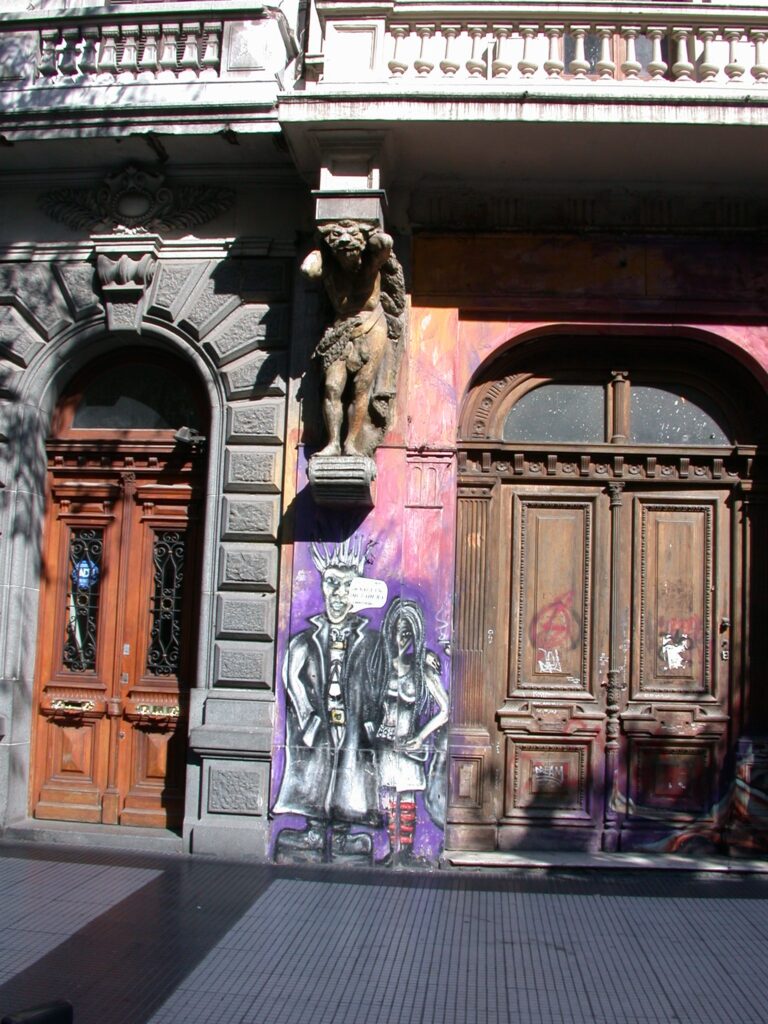

After a drink and a look at the pictures and the list of disappeared persons at the cafe, we walked over to the Plaza de Mayo and watched the mothers and grandmothers as the walked around the plaza. I even walked a bit with them.



I felt moved by their courage in standing up against the abusive Argentinian dictatorship in support of their family members who were “disappeared.”






We met Frank, a French-speaker from Montreal there after earlier meeting him at the hotel.



After searching unsuccessfully for a vegetarian restaurant, we ended up eating at a mediocre restaurant with mate (the ubiquitous tea-like beverage served warm in cured pumpkin gourds), bruschetta, and empanadas (which weren’t as delicious as the one I had near the plastic surgery clinic).



That evening, we went to a vegetarian restaurant called Bio in Palermo Viejo, which was hands down my favorite restaurant in all of Buenos Aires.
Enemy Combatants
We hang trial less
In Basra, Gitmo, Abu Grahib, and
Uncountable CIA prisons.
Lieutenants and privates from
Britain and the grand old USA
Order us to buttfuck and
Wear a girls’ bra or
Panties on our heads.
Bound in netting or
Suspended on a forklift,
Duct tape prevents us
From murmuring Koranic verses.
After five months in solitary,
They give us their damnedest
20 hours a day.
Helmets and camouflage,
Broomsticks and chairs,
Smash our bloody faces on walls,
Knee our kidneys.
Call us gay
Sons and brothers of whores.
Strip us naked,
Heads in each others’ crotches.
Pile us on top of each other,
Hoods numbered.
Roll us in piss and shit,
Punch, kick, and sodomize us.
Standing on boxes, handcuffed,
Shackled to prison bars,
Leashed before barking dogs.
Standing inquisitional
Black hood and shroud
Electrodes running wires attached to…
Only some soldiers’ grinning notion.
Orders from above:
Guards’ green plastic gloves,
Thumbs up! For a
Job well done.
Copyleft (CC-by-sa) 2005 by Will Doherty
